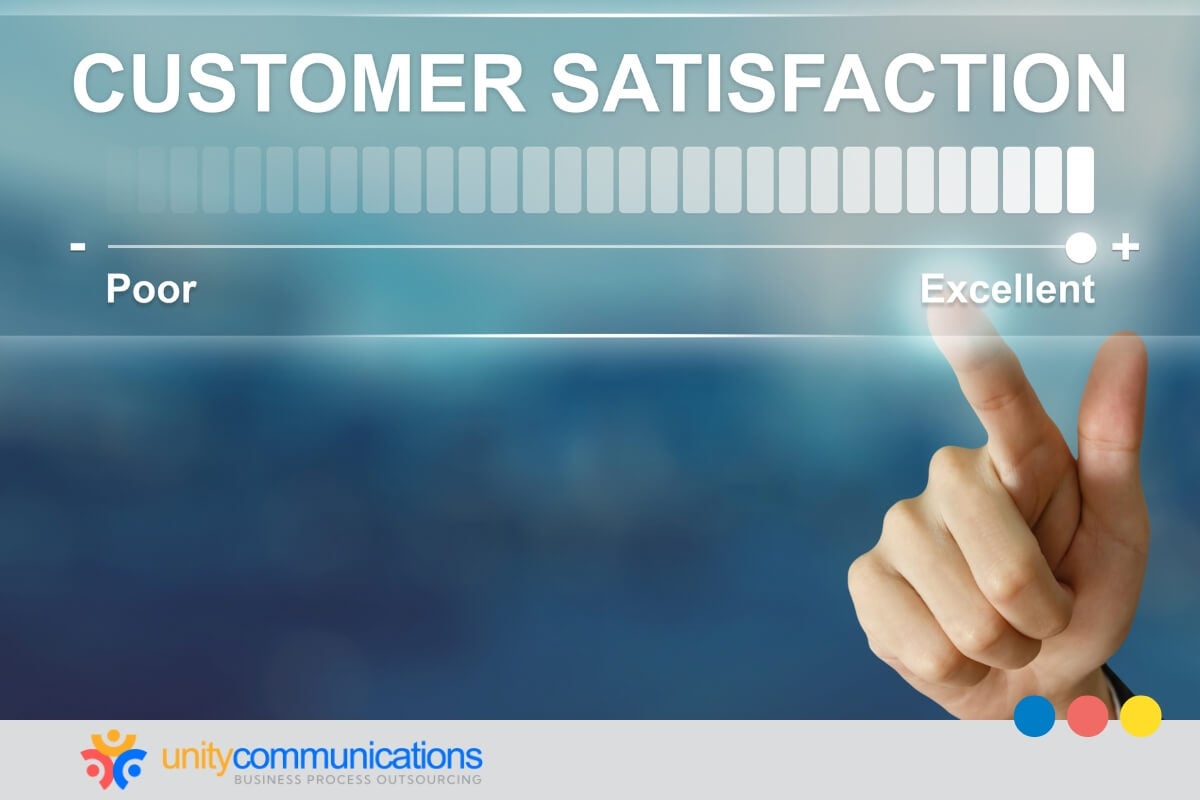Table of Contents
You hire an outsourcing firm to free your in-house workers from the burden of handling non-core tasks, letting them focus on their primary responsibilities. The practice allows you to optimize costs and streamline operations.
However, business process outsourcing (BPO) still costs money. Monitoring vendor output is crucial to achieving positive returns and successful collaboration, especially when the project is long term.
If you want to learn how to secure top BPO vendor performance, keep reading. This article explores critical metrics for assessing, improving, and maintaining excellent outcomes.
Why tracking BPO vendor performance is crucial
![]()
Selecting the right service provider and implementing effective integration strategies are critical to outsourcing success, as is monitoring your BPO vendor’s performance. It helps identify areas for improvement, detect emerging issues, and provide insights that inform decisions on maximizing BPO advantages.
Setting key performance indicators (KPIs) measures your outsourcing partner’s contribution to your business. Implementing robust KPI tracking mechanisms as part of your outsourcing service-level agreement (SLA) gives you these benefits:
- Ensure consistent product or service quality. Continuously monitoring vendor performance metrics determines whether the provider complies with the agreed-upon quality standards. Numeric results show the third-party team’s consistency in accomplishing tasks and producing deliverables based on your requirements.
- Enhance cost management and efficiency. Recording and managing vendor performance lets you determine any deviation from the BPO budget to promptly address cost overruns or shortfalls.
- Mitigate BPO risks. Regular vendor performance assessments identify problems before they escalate. For instance, evaluating your BPO partner’s security protocols can pinpoint aspects that might compromise your sensitive information. This step helps you avoid losing $4.45 million due to a data breach.
- Strengthen vendor relationships. BPO vendor performance metrics foster transparency and accountability between you and your provider. Evidence that the third-party team meets your set outcomes builds trust and ensures returns on investment (ROI).
- Enhance communication. Vendor performance management improves your engagement with the external workforce. The evaluation’s findings help identify areas where both parties struggle to collaborate and develop appropriate solutions.
- Make informed renewal decisions. Vendor management KPIs provide concrete evidence of whether to renew your contract with the BPO firm. They assist you in benchmarking the provider and confirming if it can still meet your needs and requirements.
Key BPO vendor performance metrics

After understanding what BPO performance tracking’s role is, let’s discuss KPIs. Understanding metrics enables accurate insights for informed decisions and stronger outsourcing relationships.
Here are the common metrics to measure vendor performance:
Customer satisfaction metrics for BPO call center evaluation
Customer satisfaction metrics help assess the effectiveness and quality of BPO call center services. These KPIs show how well your service vendor fulfills your consumers’ needs and whether they consistently represent your brand’s voice.
According to Salesforce’s latest report, 80% of customers consider the experience as important as a company’s products and services. Hence, your consumers must receive streamlined support from the third party.
Begin by noting and leveraging these KPIs:
| KPI | Definition |
|---|---|
| Net promoter score (NPS) | The scale of how likely customers are to recommend BPO-facilitated consumer support to others |
| Customer satisfaction score (CSAT) | The rate of how content and happy consumers are after experiencing a service across multiple touchpoints |
| Customer effort score (CES) | The evaluation of how easy or difficult it is for customers to interact with the BPO call center |
| First contact resolution (FCR) | The percentage of customer problems resolved on the first contact without further follow-ups |
| Customer retention rate | The chunk of consumers who continue using the BPO call center’s services over a specified period |
Quality and efficiency metrics for BPO service assessment
BPO vendor performance metrics for quality and efficiency inform you on how well your provider meets service standards and operational benchmarks. These essential tools ensure the outsourcing partner delivers timely and cost-effective services. Here are the KPIs under this category:
| KPI | Definition |
|---|---|
| Error rate | The frequency of mistakes in services and tasks handled by the BPO team |
| Quality assurance (QA) score | The measurement of the quality of output that the provider produced against predefined requirements and goals |
| Turnaround time (TAT) | The assessment of how long the third-party unit completes a specific task or provides service |
| Utilization rate | The percentage of a BPO employee’s time used for billable, productive work to inform resource management |
Financial metrics for BPO cost analysis
Evaluating the BPO vendor’s financial performance using critical metrics gives insights into the outsourcing deal’s cost-effectiveness and budget adherence. The results help you accurately set BPO funds and identify areas for cost savings.
These financial metrics establish transparency into the actual cost of outsourcing your functions. They also cover hidden or unexpected expenses, such as transition, change orders, and training fees.
| KPI | Definition |
|---|---|
| Cost per transaction/service | The cost incurred for each transaction or service the BPO company provides |
| Budget adherence | The tracking of the provider’s ability to stay within the agreed-upon service pricing |
| ROI | The computation of the financial benefits gained from the BPO agreement relative to the costs incurred |
| Total cost of ownership (TCO) | The total of all direct and indirect expenses related to the BPO service (e.g., setup, operating, and hidden costs) |
| Cost reduction | The calculation of reduced costs that outsourcing offers compared to in-house operating expenses |
| Break-even analysis | The evaluation of when the BPO investment begins generating positive returns |
| Cost variance | The difference between the planned BPO costs versus the actual expenses incurred |
Compliance metrics for BPO risk management
Effective BPO risk management involves monitoring compliance metrics to ensure the provider meets legal and contractual requirements. The findings reveal practical ways to mitigate issues, maintain service quality, and safeguard sensitive data.
Compliance is also cheaper than not adhering to policies, which is at least 2.7 times more expensive. Noncompliance costs about $15 million compared to compliance expenses of approximately $5.5 million.
Suppose an extensive hospital network entrusts its medical billing and operations to a third-party healthcare support provider. The medical sector has stringent rules regarding patient privacy and data security. The table below shows how measuring compliance metrics helps improve risk management when outsourcing:
| Potential risks in noncompliance | Compliance metrics in action | Benefits of tracking metrics |
|---|---|---|
The hospital network deals with significant regulatory penalties, mitigation expenses, and reputational damages if the BPO firm experiences a data breach.
| Establishing information security metrics allows the client to monitor BPO data protection measures (e.g., the frequency of security incidents and the effectiveness of threat mitigation strategies). | The client hospital can investigate and address the rise in BPO-related data breaches within a period before they negatively impact other business functions. |
| Denied claims, revenue losses, and legal audits happen when the third-party firm constantly generates inaccurate medical codes. | Calculating the BPO provider’s medical coding accuracy rate helps the hospital network identify factors affecting data precision and quality. | Coding accuracy metrics enable the medical provider to identify areas where the BPO vendor needs additional training or in-house support. |
How technology supports BPO vendor performance metrics

Manual data entry and collection are time-consuming and error-prone processes for KPI tracking. Automation measures BPO KPIs quickly and accurately. The tools below allow human workers to focus on comprehensive data analysis and strategy development for a cost-efficient BPO approach:
- Customer relationship management (CRM) systems (e.g., Salesforce and HubSpot)
- Business intelligence (BI) tools (e.g., Tableau and Power BI)
- Real-time monitoring software (e.g., Five9 and NICE inContact)
- Performance dashboards (e.g., Geckoboard and Klipfolio)
- Predictive analytics tools (e.g., IBM Watson Analytics and SAS Advanced Analytics)
- Robotic process automation (RPA) solutions (e.g., UiPath and Blue Prism)
- Quality monitoring software (e.g., NICE Quality Central and Verint)
- Compliance management systems (e.g., LogicGate and Compliance 360)
- Integration platforms (e.g., MuleSoft and Zapier)
- Feedback and survey tools (e.g., SurveyMonkey and Qualtrics)
The bottom line
Outsourcing is crucial to cutting operating expenses, streamlining non-core processes, and driving innovations. However, you must still track vendor performance to optimize BPO benefits and ensure ROI.
Establishing and implementing critical BPO vendor performance metrics fosters a successful partnership, especially when aiming to work with a third party long term. This data-driven approach gives a comprehensive picture of outsourcing’s cost-effectiveness.
Let’s connect to discuss how to build a culture of continuous improvement when outsourcing. Our team at Unity Communications knows the ins and outs of handling key metrics to unlock the full potential of your outsourced operations.




